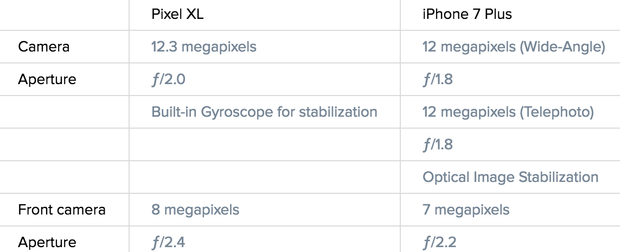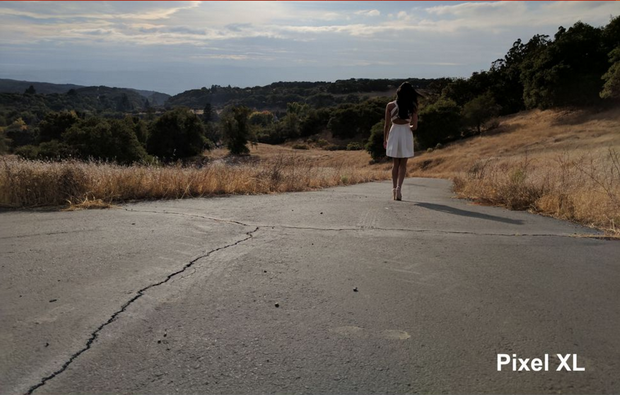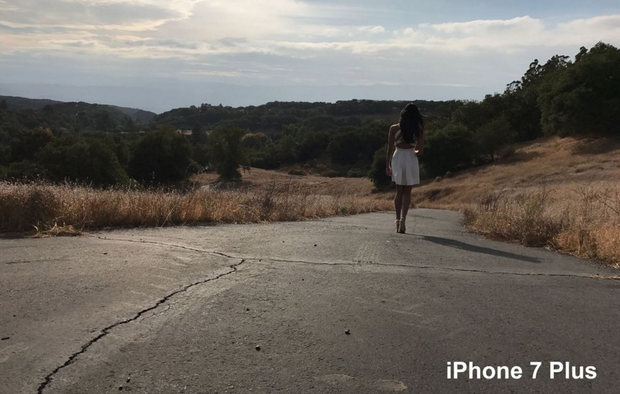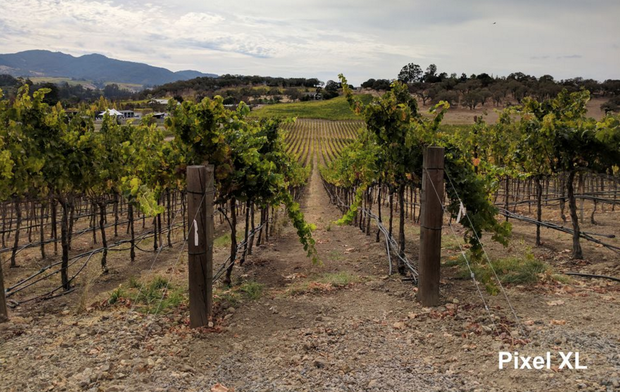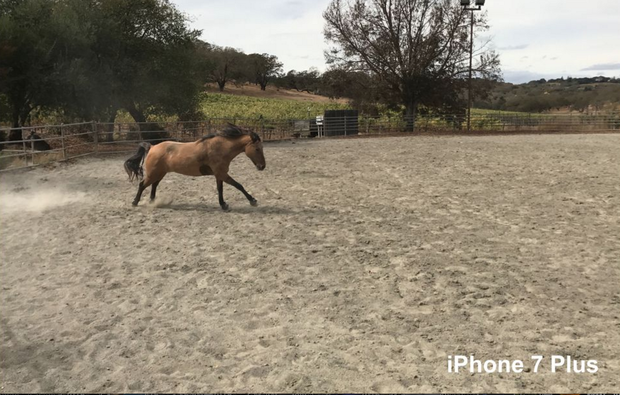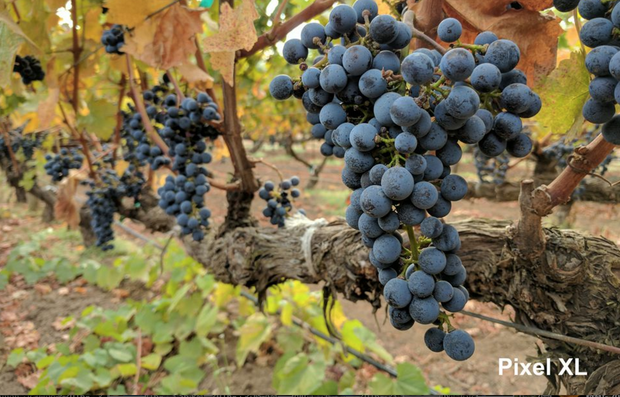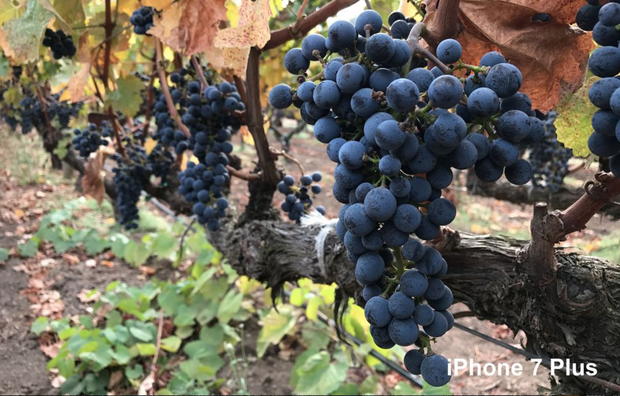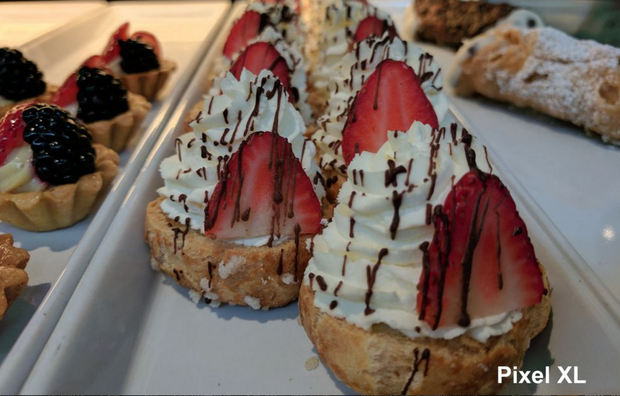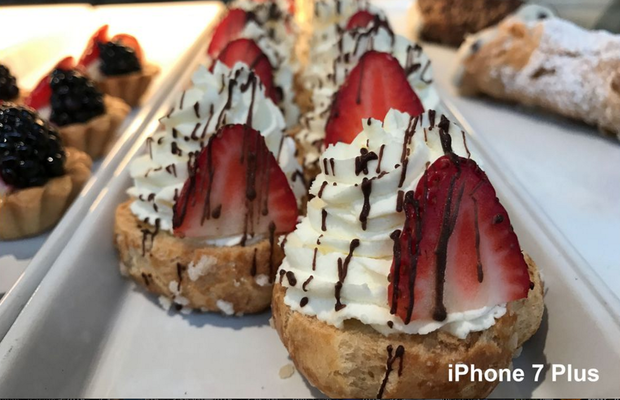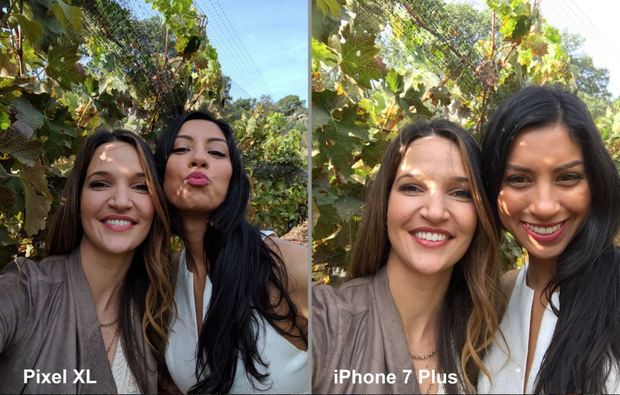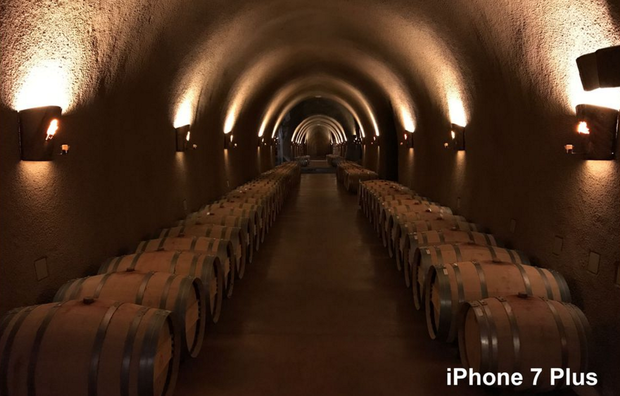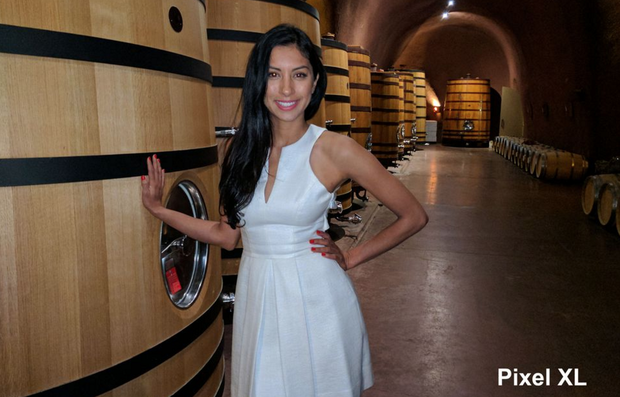Google Pixel vs. iPhone 7 Plus: Which camera is better?
This year, Google broke convention with its flagship phone by scrapping the old “Nexus” brand and calling it something new: Pixel. And while previous Nexus phones had decent cameras, Google says this Pixel has the best camera ever made on a smartphone.
But Google isn’t the only phone maker hyper-focused on photography this year. Apple’s new iPhone 7 Plus included, for the first time, a dual-camera system with optical zoom and a game-changing portrait mode.
So let’s compare the two cameras.
I set out on a day-long photoshoot in California wine country, a scenic backdrop, perfect for pitting Pixel against the iPhone 7 Plus.*
*Full disclosure: I’m not a professional photographer, but I am an Instagram addict. My phone is my primary lens and, like many other people, I care most about camera quality when upgrading my phone.
Setting up the cameras
Launching the camera on the iPhone is easy: Raise to wake (the screen automatically wakes up when lifted), then swipe left. To launch the Pixel’s camera from the lock screen, you have to press the camera icon in the bottom-right corner and drag up.
In theory, it should take seconds, but because of the size of the Pixel XL (5.5 inches), I had issues getting it across the screen on the first try, which added a few seconds to the launch. The less obvious shortcut involves double clicking the power button --which is way more effective-- but I only discovered this after the shoot.
The first thing you might notice in this comparison is that the crop on the iPhone is significantly smaller than the Pixel. That’s because the Pixel has a slightly wider-angle lens than the iPhone, which means shots look as if they were taken from farther away on Google’s phone despite having been taken from the exact same position.
And while it looks like Google used editing apps in its Pixel sample photos, we decided to keep them RAW, so you can see what they look like before being tweaked. Auto HDR was left enabled (the default) and no other camera settings were changed (save for Portrait mode -- we’ll get to that later).
The first thing I noticed while shooting outdoors was how hard it was to see through the screen of the Pixel -- even with the maximum brightness, I had a hard time previewing my shot. This would likely only bother you when shooting in direct sunlight, but it seems like the iPhone has a brighter screen than its predecessors which keeps glare down to a minimum in direct sunlight. Odd, because when you look at them indoors, the shots appear brighter on the Pixel’s 2K AMOLED display. Anyways, onto the photo comparison.
Take a look at the results for yourself, which one do you think won our shootout?
Landscape
Landscapes look great on both phones, but the Pixel appears to have the upper hand. The colors are slightly more saturated in this shot (appropriately so), the texture on the leaves is more identifiable and the background appears to be sharper. The iPhone’s shot looks slightly flatter (albeit more accurately-colored) and the background gets muddy sooner than the Pixel.
Action
When you’re photographing sporting events, small children, or (in my case) animals, a fast shutter speed is crucial. I took the phones to the stables to see if they could keep up with the horses at the Napa Valley Horse Company.
Getting the exact same shot on both phones while the horse was in motion proved nearly impossible, so the photos are different.
In this scenario, neither phone had any perceptible shutter lag and both were able to capture the horse mid air within seconds of each other. The horse is sharp and in focus in both shots, which is impressive considering how fast it was galloping. As with the vineyard photo, the colors are slightly more saturated on the Pixel and the image is sharper with greater detail on the clouds both above the horizon and the sand below the horse’s hooves.
Close-up
We hit the vineyards of the Jarvis Winery at the tail end of the harvest where there were still ripe grapes hanging on the vines, just waiting to be photographed.
Neither phone has a dedicated macro feature so I used the automatic mode on both to see how they’d handle an extreme close-up of the grapes. And here’s where it got tricky: the white balance seemed to be different on each shot. The colors in the iPhone image appear cooler with deeper blues and in the Pixel’s image, the colors are warmer, with richer golds.
The grapes appear to be brighter on the Pixel allowing you to see more detail, and darker on the iPhone creating a greater sense of depth in the shot. And for lack of a clear winner here I’m declaring this one a tie.
Food (and macro)
For lunch we took a break from the horses and the vineyards for a quick culinary tour of the Oxbow Market in Napa.
This shot made one thing clear: the minimum focus distance on the iPhone is significantly shorter than the Pixel. No matter how many times I tried to focus the Pixel on the pastry closest to me, it was only able to focus on the second and third tartlets. The iPhone didn’t have that problem. The pastry on the iPhone is brighter, giving the shot more depth (even though the background a hint over exposed.) The iPhone may be the better choice if you’re looking for tighter shots of your food (or anything else very close-up).
Portrait
Next it was back to the vineyards for some portrait shots. Both phones have a feature that uses software to mimic the bokeh (blurred background) effect otherwise only achieved with a dSLR camera.
On the Pixel it’s called Lens Blur. It’s buried under the settings icon in the top-left corner of the camera app. On the iPhone it’s actually called Portrait -- which was still in beta at the time of our shoot -- and it’s just a swipe away from the main camera interface.
I’ve used Portrait mode on the iPhone 7 Plus and it’s really easy to use. The Pixel makes it a little more difficult. Once you hone in on your subject, you have to angle the phone up or down by following the arrow on the screen. Sounds simple, but the Pixel has a tough time distinguishing between the subject and the background. The end result rendered blurred-out limbs, leaving fly-aways (and everything else behind them) in focus. TL;DR: it’s not much better than using tilt-shift on Instagram. The images taken on this mode are also half the size of the standard shots which deteriorates the quality even more.
The iPhone uses the telephoto lens for to create this effect, so you’ll likely have to step back to get the mode to work. You’ll know it’s ready when the “Depth Effect” flag appears on-screen. The iPhone was more effective at distinguishing between the the subject and background, thanks to that dual lens setup and though the edges still aren’t perfect, the overall quality of the portrait is significantly better than that of the Pixel. And this is an important win for the iPhone.
Selfies
If you ever feel like flipping the shot on yourself, the Pixel may be the better choice with an 8 megapixel sensor compared to the iPhone’s 7 megapixels. Not only did the selfie look sharper, it was also wider-angle,letting me get more in the shot without having to over stretch my arm. (Win!)
The same held true for low-lit selfies. Even though the iPhone has that “retina flash” (which illuminates the screen to light up your selfie), the selfie shot on the Pixel was sharper and better lit.
Low light
The wine cellars at the Jarvis Winery are burrowed inside a cave, the ultimate backdrop for a lowlight shootout.
We mounted the phones on a tripod to get the exact same angle on both phones and reduce blur. Bot shots came out looking great, considering how dark the cellars were, but the Pixel was the clear winner. The camera was able to capture more light in the shot with greater contrast, creating a sense of depth more accurately resembling the real scene.
Flash
So what happens when they get some help from the flash? The iPhone 7 Plus has a Quad LED true tone flash while the Pixel has a dual-LED dual tone flash which means -- if you believe the jargon -- the iPhone should have the upper hand.
But the results speak for themselves. The model on the iPhone shot looks well-lit, but everything else is dark, and it’s clear it was taken with a flash. The light on the Pixel is more dispersed, making it look more natural and less flash-like.
The winner
Let’s get one thing out of the way: both phones have -- you might say are -- impressive cameras.
If you tend to shoot portraits and that’s what matters to you most, the iPhone 7 Plus is an obvious choice. Portrait mode is dSLR-esque in beta and we only expect it to improve by the time it gets a public release.
But if brighter colors, sharper detail throughout the backgrounds of photos and capable low-light photography is more important, it’s the Pixel. I have to admit, I initially thought Google over-promised on its new flagship -- especially after those disappointing Nexus cameras -- but I was wrong. It’s a new chapter for Google phones and this one earned its name.
This article originally appeared on CNET.com.
